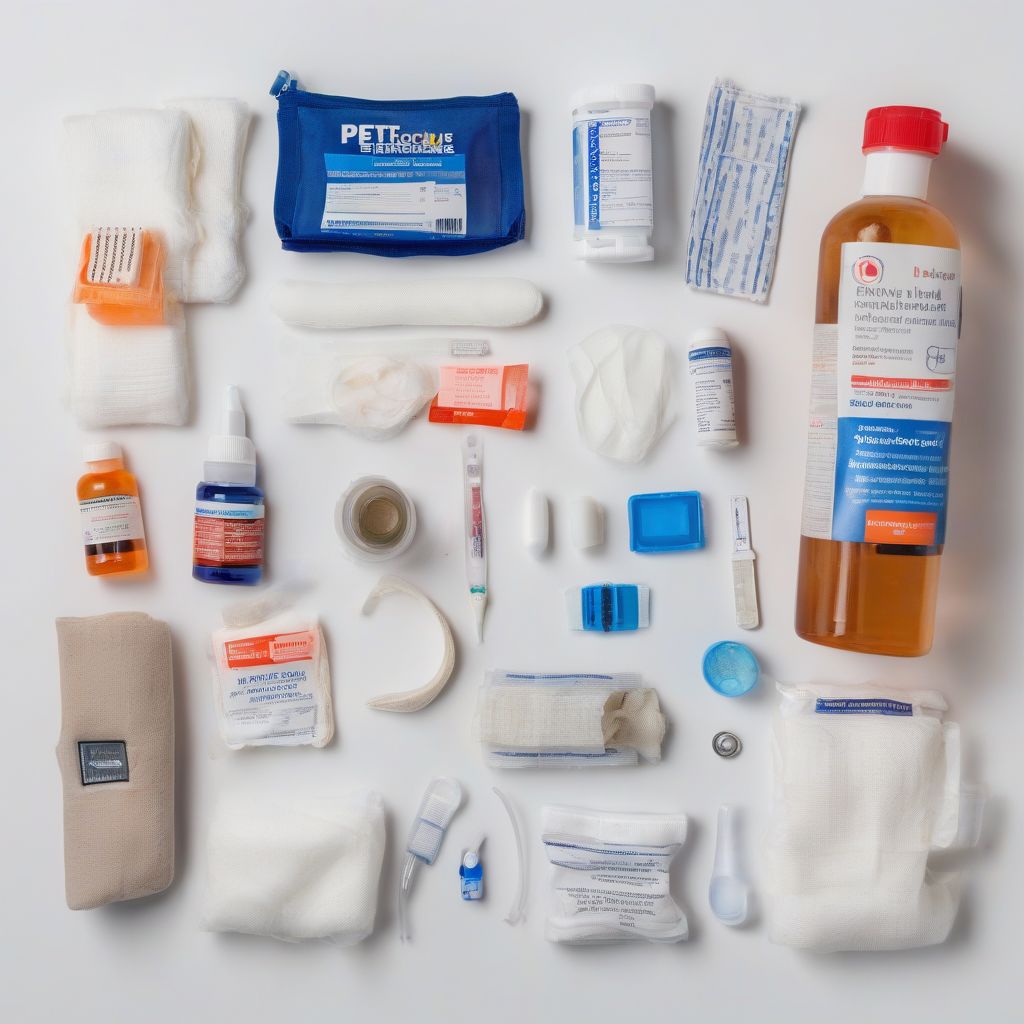Imagine this: It’s a normal Tuesday evening, you’re enjoying dinner with your family, and suddenly you hear a yelp from your beloved dog. You rush over to find them choking on a toy. Panic sets in. Do you know what to do?
Emergencies involving our pets can happen at any moment, often when we least expect them. Being prepared for these situations can make all the difference in ensuring your furry friend’s safety and well-being. This comprehensive guide will equip you with essential knowledge about emergency pet care, common pet emergencies, and how to provide crucial first-aid.
Understanding Pet Emergencies: When to Seek Help
Recognizing the signs of a pet emergency can be crucial in getting your furry friend timely treatment. While it’s always best to err on the side of caution and consult a veterinarian, here are some common signs that your pet needs immediate medical attention:
Common Signs of Pet Emergencies:
- Difficulty breathing or choking: Labored breathing, gasping for air, blue-tinged gums, or excessive panting.
- Severe bleeding or wounds: Uncontrollable bleeding, deep cuts, or wounds with bones exposed.
- Sudden collapse or loss of consciousness: This can be a sign of poisoning, heart problems, or other serious conditions.
- Seizures or convulsions: Uncontrollable shaking, muscle twitching, loss of bladder or bowel control.
- Persistent vomiting or diarrhea: Especially if accompanied by blood, lethargy, or loss of appetite.
- Inability to urinate or defecate: This could indicate a urinary blockage, which is a life-threatening condition.
- Sudden changes in behavior: Extreme lethargy, disorientation, restlessness, aggression, or vocalization.
- Suspected poisoning: Contact with toxins, ingestion of medications or chemicals, sudden illness after being outside.
- Heatstroke or hypothermia: Signs of heatstroke include excessive panting, drooling, vomiting, and collapse. Hypothermia is characterized by shivering, lethargy, and weakness.
- Eye injuries: Redness, swelling, discharge, squinting, or pawing at the eye.
Essential First-Aid for Pet Emergencies:
Administering proper first aid before reaching a vet can be life-saving. Here’s a guide for handling common pet emergencies:
1. Bleeding: Apply direct pressure to the wound using a clean cloth. If possible, elevate the injured area.
2. Choking: If the object is visible and easily accessible, carefully try to remove it. If not, perform the appropriate Heimlich maneuver for your pet’s size.
3. Seizures: Keep your pet safe from surrounding hazards and ensure they can breathe easily. Do not try to restrain them. Note the duration of the seizure.
4. Burns: Flush the burned area with cool water for 10-15 minutes. Do not apply any ointments or creams without consulting a vet.
5. Fractures: Immobilize the injured area using a splint or a rolled-up towel. Avoid moving your pet as much as possible.
6. Poisoning: Identify the poison if possible. Do not induce vomiting unless directed by a veterinarian or poison control center.
Building a Pet Emergency Kit: Be Prepared
Having a well-stocked pet emergency kit readily available can save precious time during an emergency. Here’s what to include:
- First-aid supplies: Gauze pads, adhesive tape, antiseptic wipes, hydrogen peroxide, cotton balls, tweezers, scissors, digital thermometer, pet-safe eyewash solution.
- Medications: Your pet’s regular medications with dosage information, as well as any emergency medications prescribed by your vet (e.g., antihistamines).
- Important information: Your veterinarian’s contact information, emergency animal hospital contact, ASPCA Poison Control Center phone number (888-426-4435).
- Other essential items: A muzzle (if your pet is prone to biting when stressed), a leash, a carrier, a recent photo of your pet, a towel, bottled water, and a small bowl for water.
 Pet Emergency Kit Essentials
Pet Emergency Kit Essentials
[amazon bestseller=”pet emergency kit”]
Prevention is Key: Reducing the Risks of Pet Emergencies
While not all emergencies are preventable, taking proactive steps can significantly minimize risks:
- Pet-proof your home: Secure hazardous substances, medications, and cleaning products. Keep electrical cords out of reach, and be mindful of potential choking hazards like small toys or bones.
- Provide a safe and stimulating environment: Ensure your pet has a designated safe space, especially during stressful events like fireworks or storms.
- Maintain regular veterinary checkups: Regular wellness exams can help detect potential health issues early on.
- Vaccinate and prevent parasites: Keep your pet up-to-date on vaccinations and provide year-round parasite prevention.
- Provide a balanced diet and exercise: A healthy lifestyle can strengthen your pet’s immune system and reduce the risk of certain conditions.
Conclusion: Your Pet’s Well-being is in Your Hands
Being prepared for pet emergencies is an essential part of responsible pet ownership. By understanding common emergencies, knowing basic first-aid, and having an emergency kit ready, you can act swiftly and confidently during critical moments. Remember, prevention is always better than cure, so take proactive steps to minimize risks and keep your beloved companion safe. If you’re ever unsure about your pet’s health, don’t hesitate to contact your veterinarian immediately.
We encourage you to share this valuable information with fellow pet owners and help us create a safer world for our furry friends. Do you have any emergency pet care tips you’d like to share? Let’s start a conversation in the comments below!
